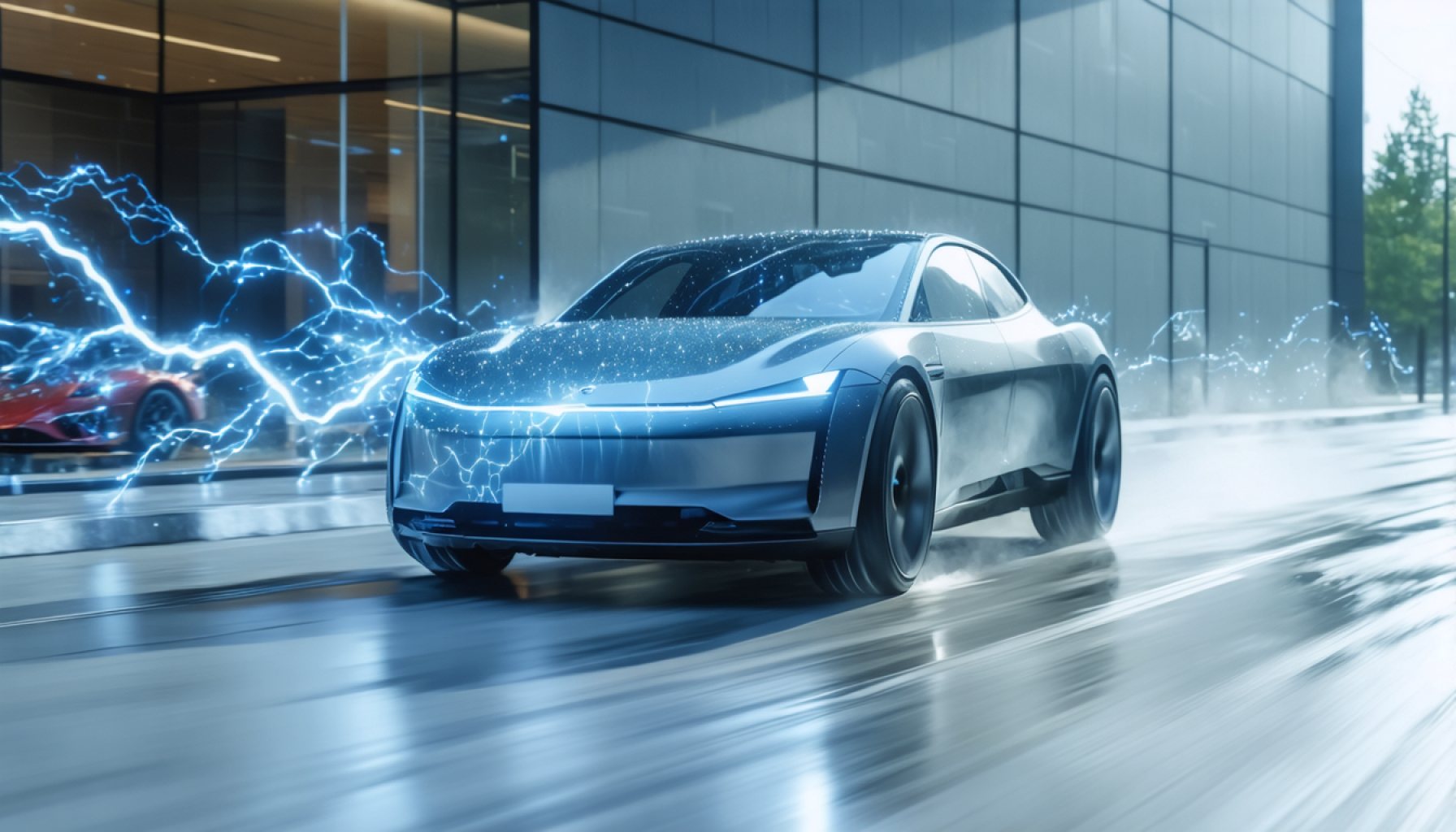- The global demand for electric vehicles (EVs) is surging, driven by efforts to reduce reliance on fossil fuels and combat climate change.
- The electric vehicle battery market is experiencing exponential growth, with a projected value increase from USD 66.6 billion in 2023 to USD 375.84 billion by 2032.
- Lithium-ion batteries lead in efficiency and longevity, with solid-state and sodium-ion batteries also emerging.
- Asia Pacific, particularly China, India, and South Korea, is a key player, accounting for over 51% of global revenue in 2022.
- Key industry players like LG Energy Solution, BYD Company, and Panasonic Holdings are driving technological innovation.
- The shift to electric vehicles signifies a significant step towards a sustainable future, underscoring collective action and environmental responsibility.
A quiet energy revolution is humming in the heart of the global auto industry, where lithium charges after fossil fuels, and electricity lights a path to the future. The global demand for electric vehicles (EVs) soared as governments intensified efforts to reduce reliance on fossil fuels and combat climate change. This shift drives a meteoric rise in the electric vehicle battery market, a sector poised for exponential growth.
Visualize the global landscape where towering factories in China hum with activity, producing what some call the heart of the electric vehicle: the battery. According to the International Energy Agency’s 2023 report, battery demand has exploded, with an estimated 65% surge from 330 GWh in 2021 to 550 GWh in 2022. As a result, silicon valleys of energy storage—spanning across continents from Asia to America—employ cutting-edge technology, marking a significant threshold in our collective move toward sustainable mobility.
The numbers are startling, with the market valued at an impressive USD 66.6 billion in 2023. But that’s not where it stops. Experts anticipate this figure will leap to a staggering USD 375.84 billion by 2032, propelled by an astonishing compound annual growth rate (CAGR) of 21.2% between 2025 and 2032.
Delving into the heart of this transformation, various battery types power this electrified journey. Lithium-ion batteries, renowned for their efficiency and longevity, lead the charge, with other technologies like solid-state and sodium-ion batteries trailing closely behind. Automakers race to unveil new models, each boasting more power and range, driving consumer curiosity and enkindling a new era of green vehicles.
The sprawling landscape of this industry—segmented by battery type, vehicle type, material composition, and geographical reach—functions like the intricate gears of a vast machine. Each segment is essential, facilitating the synergy necessary for seamless electrification. In the fast-paced regions of Asia Pacific, particularly China, India, and South Korea, support from governments plus increasing consumer demand feed this rapid expansion. The region accounted for over 51% of the global revenue in 2022, cementing itself as a leader in the electric vehicle battery arena.
Innovative key players such as LG Energy Solution, BYD Company, and Panasonic Holdings are not mere participants—they spearhead an industry brimming with potential and promise. As these titans collaborate and compete, the innovation landscape brightens, illustrating a dynamic and oftentimes thrilling narrative of technological evolution.
The winds of change ripple through the economies and industries, challenging the status quo and promising a cleaner, more sustainable planet. Automakers and battery producers find themselves at a nexus of opportunity and responsibility, their advances powered not just by ambition but also by an urgent environmental ethos.
In this electrifying journey, the ultimate takeaway emphasizes the power of collective action and sustainable innovation. The wave of electric vehicles is not merely a trend—it is an indelible movement steering us closer to a green horizon. As consumers and industry leaders navigate this transformative period, embracing the electric vehicle revolution seems not only inevitable but imperative for a cleaner, brighter tomorrow.
The Electric Vehicle Revolution: What You Need to Know About the Future of Battery Technology
Expanding on the Electric Vehicle Battery Market
As the electric vehicle (EV) industry accelerates into a new era, understanding the intricacies of the EV battery market is vital. The International Energy Agency’s report highlights a surge in battery demand, projecting an eye-opening leap from 330 GWh in 2021 to 550 GWh in 2022—a climb largely driven by lithium-ion technology, the current gold standard in EV batteries due to its efficiency and long lifecycle. Here’s a deeper dive into the factors driving growth and innovation in this sector:
How-To Steps for Transitioning to Electric Vehicles
1. Evaluate Your Driving Needs: Consider daily commute distance and accessibility to charging stations.
2. Research the Market: Identify lab-proven, reliable brands such as Tesla, Nissan, or Hyundai.
3. Consider Battery Efficiency: Focus on mile range and warranty of battery, especially from top battery makers like LG Energy Solution or Panasonic.
4. Understand Government Incentives: Investigate tax rebates or incentives available in your region to offset purchase costs.
Battery Technologies Beyond Lithium-ion
While lithium-ion remains prevalent, other battery technologies are emerging:
– Solid-State Batteries: Offering greater energy density and predicted to enhance EV range significantly.
– Sodium-Ion Batteries: More abundant and cost-effective but currently less energy-dense than lithium counterparts.
Market Forecasts & Industry Trends
The EV battery market is valued at USD 66.6 billion in 2023 and is forecasted to skyrocket to USD 375.84 billion by 2032, growing at a CAGR of 21.2% between 2025 and 2032. Key growth regions include Asia-Pacific, especially China and India, where government support and consumer demand are surging.
Reviews & Comparisons
From the performance of Tesla’s Model S to the affordability of Nissan’s Leaf, each EV’s battery life, range, and sustainability profile paint a diverse but competitive landscape. By comparing these metrics, consumers can make informed decisions suited to their preferences and lifestyle.
Controversies & Limitations
Some controversies remain around battery production’s environmental impact, particularly concerning raw material mining (e.g., lithium, cobalt). The industry grapples with reducing the carbon footprint of production processes and finding sustainable raw material sources.
Real-World Use Cases
– Renewable Energy Storage: Utility-scale lithium-ion battery installations provide backup storage, smoothing out intermittencies in solar or wind energy output.
– Grid Support: EVs can feed electricity back to the grid during peak hours, enhancing grid stability.
Security & Sustainability
Many manufacturers focus on cybersecurity in EVs to protect against potential hacking threats. Sustainability initiatives are also paramount, with companies like Tesla leading efforts in battery recycling programs.
Pros & Cons Overview
Pros:
– Zero direct emissions, aligning with greener environmental goals.
– Lower overall maintenance costs compared to traditional ICE vehicles.
Cons:
– Dependency on charging infrastructure, which varies by region.
– Initial purchase price can be higher despite long-term savings.
Insights & Predictions
The future of EV batteries likely will see a blend of existing lithium-ion technology with new innovations such as graphene batteries, potentially doubling efficiency and reducing charge times. The transition to sustainable energy looks promising with further advancements predicted in the next decade.
Actionable Recommendations
– Stay Informed: Keep abreast of the latest developments by following industry reports and expert analyses.
– Adopt Early: Consider transitioning to an EV sooner to take advantage of early adopter benefits and government incentives.
For more insights into sustainable automotive trends and technology breakthroughs, visit International Energy Agency and BYD.







